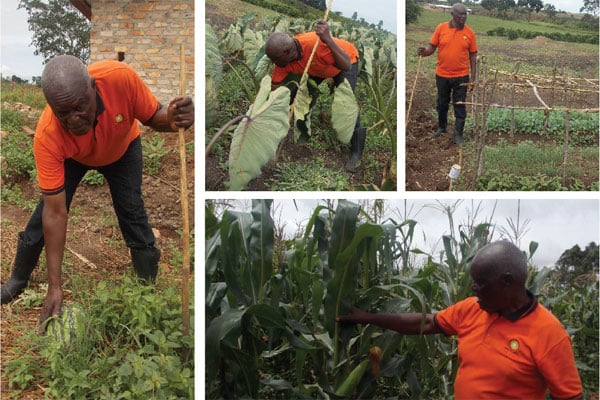Prime
Flavouring yoghurt with coffee, cocoa

Coffee-flavoured yoghurt on display during the Food Festival last month. PHOTO/LOMINDA AFEDRARU
What you need to know:
- One of the greatest value addition to coffee and cocoa is around the corner. Scientists in Uganda are creating options for coffee and cocoa farmers by producing yoghurt flavoured with coffee and cocoa.
Yogurt, which is mainly processed from milk, is known for its health benefits including high protein, calcium, vitamins and live culture which can enhance the emotional microbial system of the body.
These nutrients can offer protection for bones and teeth as well as help prevent digestive problems. Low fat yogurt can be a useful source of protein on weight loss diet and the nutrients may boost the immune system of the body.
However, yoghurt processors world over including those in Uganda, have devised means of adding various flavours using agriculture products such as coffee and cocoa.
The process
Scientists at the National Coffee Research Institute (NaCORI) at Kituuza, Mukono District are the brain behind coffee/cocoa yoghurt processing which started as a research initiative.
Gloria Nassali, a research assistant at the institute explained to Seeds of Gold about the initiative during the Utafiti Food festival which took place recently at the National Crops Resources Research Institute in Namulonge, noting that it is one of value addition initiatives scientists at NaCORI are pursuing with the main aim of providing ready market for coffee and cocoa grown by farmers in the country.
“Most people want to consume coffee and cocoa as hot beverages yet during the dry season, people need to take something cold to quench their thirst. It is the reason the team at NaCORI value addition department decided to process coffee/cocoa yoghurt,” she noted.
She explains that coffee, in particular, contains caffeine antioxidants which are capable of fighting diseases such as cancer. It is the reason her team decided to incorporate a minimum percentage of coffee in the yoghurt.
The team has taken care of the amount of coffee and cocoa incorporated in the yoghurt purposely to care for all categories of people ranging from children to adults as consumers of the product.
Nassali says her team ensures there is minimum natural additive mixture for purposes of keeping the yoghurt fresh. The product has a shelf life of more than three months if refrigerated.
The team is using the same process of pasteurising the yoghurt just like other products. At the moment, their products are only available within the institute or in Naro exhibition activities.
Step by step
Using information from the US-based Food Technology Magazine, Nassali explains that yoghurt processing begins with modification of the incoming milk composition.
This process typically involves reducing the fat content and increasing the total solids in the milk. A standardising tank is used to separate fat from milk. Alternatively, milk fat can be added to skim milk to obtain the desired fat level. Depending on the type of yogurt, the final fat content ranges from one to 10 per cent.
From the separator, the milk is placed in a storage tank. It is then tested for fat and solids content. The solids content of the milk is then increased to around 16 per cent. The nonfat components include lactose, protein and minerals. It is at this point that sweeteners including coffee and cocoa can be added.
The milk is then pasteurised to break down microorganisms that may interfere with the fermentation process. It also helps release compounds in the milk and remove dissolved oxygen both of which stimulate growth of the starter cultures.
During pasteurisation, milk is heated to 85–90.5 degrees Celsius for 30–60 minutes.
The milk is then homogenised to produce a smoother and creamier end product.
The milk is then cooled to 40–44 degrees Celsius and inoculated with a lactic acid producing culture.
During this stage, the curd is formed and the yogurt’s textural characteristics and taste are developed.
The inoculated milk is either incubated in a hygienically sealed stainless steel stirred vessel or consumer-sized sterile packages.
Innovation
Recent research has focused on development of new flavours, increased nutrition and longer-lasting yoghurt products. Development of spicy yoghurts through addition of spices, savoury additives, espresso and vegetables is another new trend as is inclusion of grains such as oats.
Diverse
The retired politician owns a square mile of land at Kabale Village in Rakai District where he keeps Friesian cows and also grows Robusta coffee, bananas, and other crops.
He further owns two square miles at Matalama in Ndagwe Sub-county.




